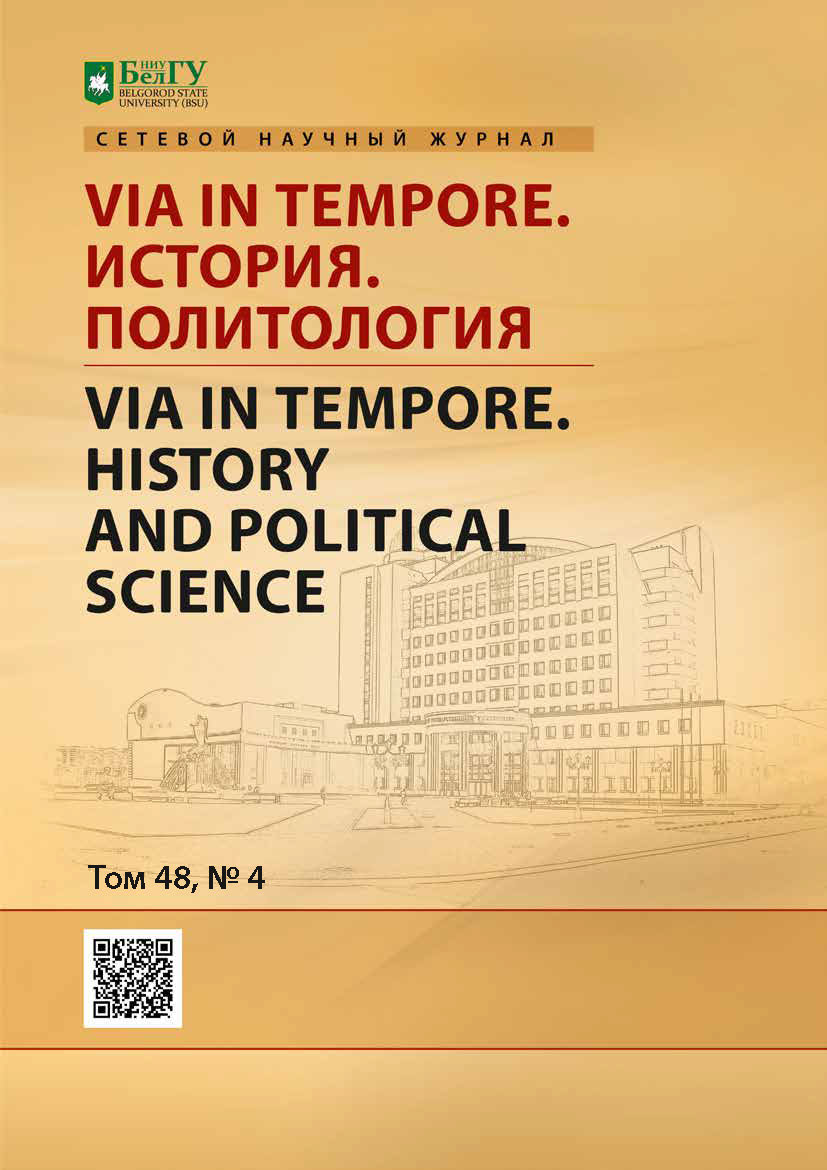Deconstruction of Aegyptiaca Romana: historiographical transformations and problem statement
DOI:
https://doi.org/10.52575/2687-0967-2021-48-4-749-754Keywords:
Ancient Rome, Egypt, Aegyptiaca Romana, perception of foreign cultureAbstract
The article analyzes the approaches and concepts of research devoted to the problems of studying Aegyptiaca Romana in Roman society in foreign classical studies. In the historiography of Aegyptiaca Romana, the religious interpretation, mainly associated with the cult of Isis, has long been the dominant paradigm. Only in the mid-1990s and early 2000s did the first works appear in which there is a rejection of the dogmatic attitude to search for a religious context with an emphasis on general cultural interpretation. In general, the most important result of the research carried out to date is the understanding that the one-sided interpretation of Aegyptiaca Romana as closely related to the religious context was erroneous, and the study of the ideas about Aegyptiaca Romana should be based on the entire set of the historical relations between Egypt and Rome, it is necessary to take into account the context, the relationship of form and material, the specifics of stylistic expression, and also to consider the possibility of a wider range of interpretations of cultic images, but without shifting to a new extreme of complete rejection of the religious context.
Downloads
References
Barrett C.E. 2019. Domesticating Empire: Egyptian Landscapes in Pompeian Gardens. Oxford, Oxford University Press, 445.
Curl S. 2005. The Egyptian revival: ancient Egypt as the inspiration for the design motifs in the west. New York, Routledge, 572.
Curran B.A. 1996. Review of J.M. Humbert, M. Pantazzi, C. Ziegler (eds.), Egyptomania: Egypt in western art, 1730–1930 (1994). In: The Art Bulletin. Vol. 78.4: 739–745.
Curran B.A. 2007. The Egyptian renaissance: the afterlife of ancient Egypt in early modern Italy. Chicago, The University of Chicago Press, 431.
Davies P.J.E. 2011. Aegyptiaca in Rome: adventus and romanitas. In: Cultural identity in the ancient Mediterranean. Ed. E. Gruen. Los Angeles, Getty Research Institute: 354–370.
De Vos M. 1980. L'egittomania in pitture e mosaici romano-campani della prima età imperiale. Leiden, Brill, 107.
Egyptomania: Egypt in Western art, 1730–1930. Ed. J.M. Humbert, M. Pantazzi, C. Ziegler. Paris, Réunion des musées nationaux, 1994.
Hülsen C. 1903. Porticus Divorum und Serapeum im Marsfelde. In: Mitteilungen des Kaiserlich Deutschen Archaeologischen Instituts. Bd. XVIII: 17–57.
Humbert J.M. 1989. L'Egyptomanie dans l'art occidental. Courbevoie, ACR Edition, 336.
Imhotep Today: Egyptianizing architecture. Ed. J.M. Humbert, C. Price. New York, Routledge, 2017.
L'Égyptomanie à l'épreuve de l'archéologie. Ed. J.M. Humbert. Paris, Musée du Louvre, 1996.
Lafaye G. 1883. Histoire du culte des divinités d'Alexandrie Sérapis, Isis, Harpocrate et Anubis hors de l'Égypte depuis les origines jusqu'a la naissance de l'école Néo-Platonicienne. Paris, Thorin, 342.
Malaise M. 1972. Inventaire préliminare des documents égyptiens découverts en Italie. Leiden, Brill, 207.
Meyboom P.G.P. 1995. The Nile Mosaic of Palestrina: Early Evidence of Egyptian Religion in Italy. Leiden, Brill, 409.
Mol E.M. 2015. Egypt in material and mind: the use and perception of Aegyptiaca in Roman domestic contexts of Pompeii. PhD Diss. Universiteit Leiden, 522.
Roullet A. 1972. The Egyptian and Egyptianizing Monuments of Imperial Rome. Leiden, Brill, 184.
Schefold K. 1952. Pompejanische Malerei: Sinn und Ideengeschichte. Basel, B. Schwabe, 207.
Söldner M. 2000. Ägyptenrezeption im augusteischen Rom. In: Antike Welt. Zeitschrift für. Archäologie und Kulturgeschichte. Bd. 31: 383–393.
Swetnam-Burland M. 2007. Egyptian Objects, Roman Contexts: A Taste for Aegyptiaca in Italy. In: Nile into Tiber. Egypt in the Roman World. Ed. L. Bricault, M.J. Versluys, P.G.P. Meyboom. Leiden: 113–136.
Tinh V. Tran Tam. 1964. Essai sur le culte d'Isis à Pompéi. Paris, E. de Boccard, 206.
Versluys M.J. 2002. Aegyptiaca Romana: Nilotic Scenes and the Roman Views of Egypt. Leiden, Brill, 509.
Vittozzi G.C., Versluys M.J. 2013. La terra del Nilo sulle sponde del Tevere. Roma, Aracne, 313.
Zanker P. 1987. Augustus und die Macht der Bilder. Munich, C.H. Beck, 333.
Abstract views: 190
Share
Published
How to Cite
Issue
Section
Copyright (c) 2021 Via in tempore. History and political science

This work is licensed under a Creative Commons Attribution 4.0 International License.


